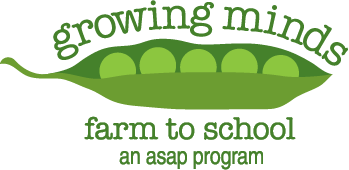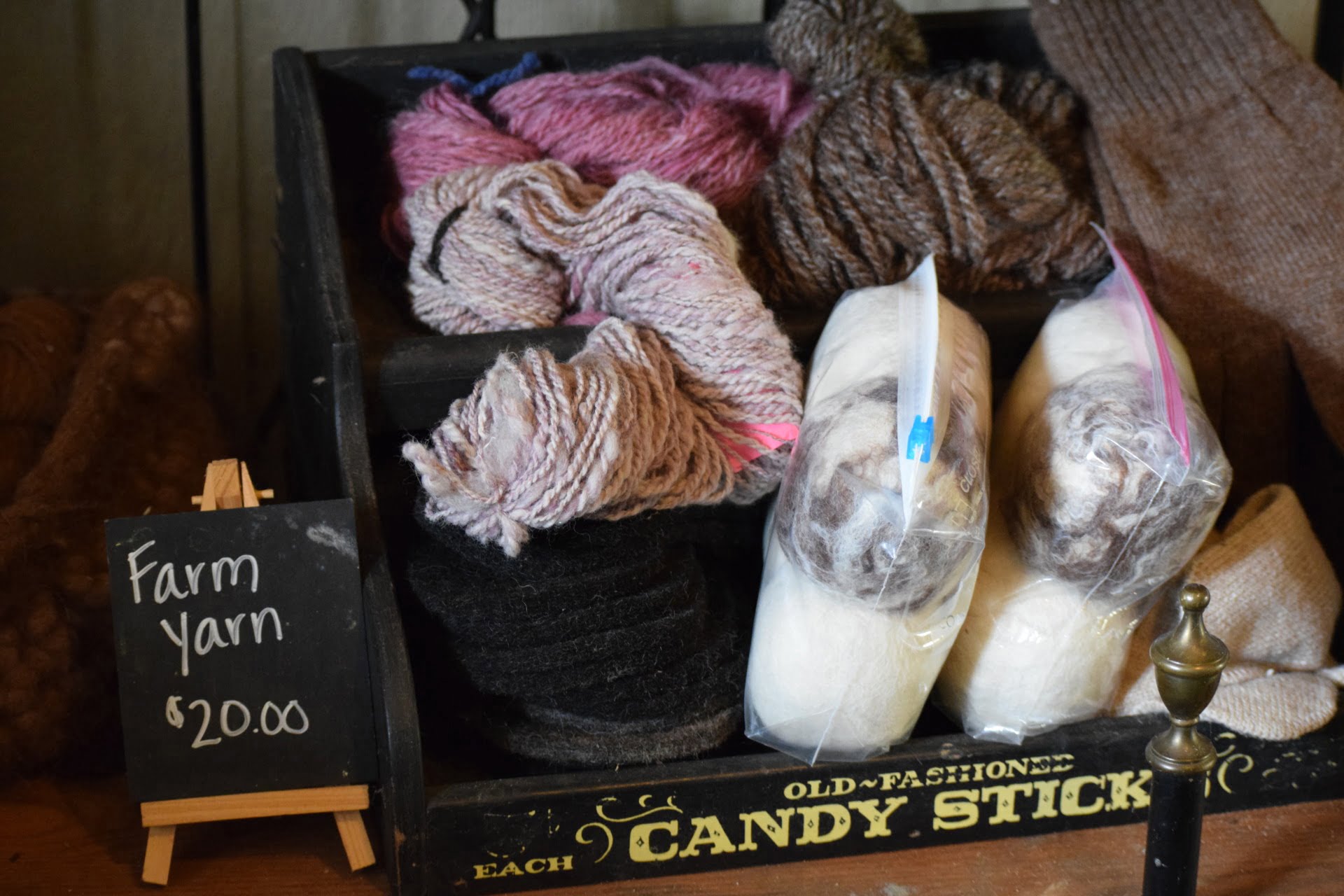This week’s theme is fiber. Our “Growing Minds Day by Day” educational resource lists are designed for families and educators.
Fiber is a thread or strand from which a textile–a woven fabric–can be formed. Natural fibers are harvested from both plants (such as cotton, hemp, or bamboo) and animals (like alpacas, sheep, goats, rabbits, or even silkworms). Western North Carolina and the Appalachians have a strong cultural tradition of fiber arts and fiber farming. Spinning, weaving, knitting, and felting are a few of the ways that artists use natural fibers from animals and plants to create beautiful and functional textiles, including clothing, accessories, household goods, and artwork. Educators and parents can use the resources below to teach children about some of the animals that farmers in our region raise for fiber and feathers.
Books:
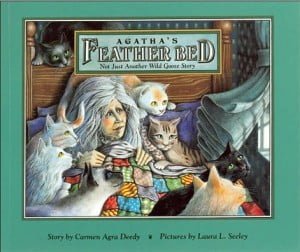 Agatha’s Feather Bed: Not Just Another Wild Goose Story
Agatha’s Feather Bed: Not Just Another Wild Goose Story
This week’s first recommendation is Agatha’s Feather Bed by Carmen Agra Deedy. Agatha loves her new feather bed, but when six shivering, naked geese pay her a visit to discuss the origin of the feathers…is her goose cooked? In a delightful, O. Henry-inspired ending, Agatha arrives at a solution that benefits all, teaching readers to respect the delicate balance between our resources and responsibilities. Recommended for grades K-2. Watch a read aloud on YouTube.
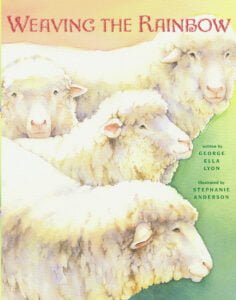 Weaving the Rainbow
Weaving the Rainbow
When the weaver looks at her flock of sheep, she sees the rainbows that she weaves from their fleece. This book, written by George Ella Lyon, takes the reader on the journey that wool takes from sheep to finished object. Watch a read aloud of this story on YouTube. Recommended for grades K-3. Find companion lessons and teacher resources for this book compiled by NY Agriculture in the Classroom here.
Find more books
Both of the books above are available for Asheville-based educators to check out from our lending library. Visit the Growing Minds’ farm to school literature database to discover more of our favorite children’s books. Type “fiber” into the search bar to explore more of our favorite stories.
Local Food Recipe:
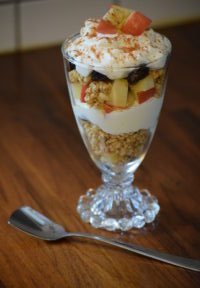 Local fruit parfaits are a versatile, healthy, kid-friendly snack. By layering yogurt with local fruits and other toppings, such as granola, nuts, or dried fruit to create their own parfaits, children can practice patterns and sequencing. Below, we include classroom and at-home recipes for local apple parfaits from our Farm to Preschool Toolkit.
Local fruit parfaits are a versatile, healthy, kid-friendly snack. By layering yogurt with local fruits and other toppings, such as granola, nuts, or dried fruit to create their own parfaits, children can practice patterns and sequencing. Below, we include classroom and at-home recipes for local apple parfaits from our Farm to Preschool Toolkit.
Local Apple Parfait – At home recipe
Serves 1 adult or 2 children
Ingredients:
- 1 small local apple, diced
- 1/4 cup granola
- 1/4 cup dried fruit (cranberries, raisins, etc.)
- 1 cup vanilla yogurt
Directions:
- Cover the bottom of a clear plastic or glass cup with apples.
- Layer a small amount of granola and dried fruit on top of the apples.
- Spoon a small amount of yogurt on top.
- Cover yogurt with diced apples, then add another layer of granola and dried fruit.
- Repeat layering until you use all ingredients or fill your cup.
Local Apple Parfait – Classroom recipe
Serves 20 children
Ingredients:
- 10 local apples, diced
- 2 cups granola
- 2 cups dried fruit (cranberries, raisins, etc.)
- 2 32 oz. containers of vanilla yogurt
Directions:
- Cover the bottom of a 4 oz. clear plastic cup with diced apple.
- Layer 1 tablespoon of granola and 1 tablespoon dried fruit on top of the apples.
- Spoon 1 oz. of yogurt on top.
- Cover yogurt with diced apples.
- Add another layer of granola and dried fruit.
- Top with yogurt.
Educational Resources:
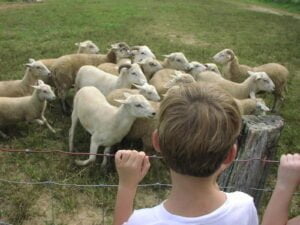
Growing Minds Lesson Plans
- Farm Animals (K-2): This lesson will introduce students to different farm animals and what food and materials they can provide us and our community.
- Thanksgiving for Farmers (K-2): Review activities that happen on the farm and animals that live there. Make the connection between farms and the food we eat each day, emphasizing the importance of community farms. Introduce letter writing, specifically thank you letters, and guide students in writing thank you letters to farmers in your county or region.
- Seasons on a Farm (K-2): Students will learn about seasonal weather patterns and their effects on local farms and gardens and use qualitative and quantitative measurements to describe weather.
- This Week in the Garden November Activity Guides
Learn more about the history of fiber arts in the Appalachian region
- “Weaving Wonders: Asheville Rich Farm to Spindle Heritage” (source: Explore Asheville)
- Southern Highland Craft Guild is a community of makers who demonstrate and exhibit works of fiber, leather, wood, glass and other materials. These makers reside in the mountain regions of nine states, including North Carolina. Visit their website or online store to explore their artwork.
- Visit the Folk Art Center on the Blue Ridge Parkway to see examples of historic and modern Southern Appalachian textiles.
- Local Cloth is a non-profit organization dedicated to growing the fiber supply chain in Western North Carolina and enhancing the lives of those who make their living in fiber industries. They host workshops and other educational community events. They also maintain a member directory you can use to find fiber artists, farmers, and other members of the Asheville-area fiber community.
Activities:
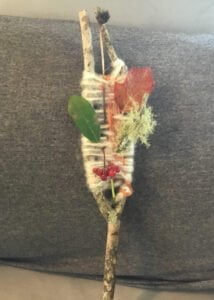 Branch Weaving for Kids
Branch Weaving for Kids
Branch weaving is a technique that allows you to weave on a stick. First, you’ll need to take a walk to find a two-pronged stick (a stick that forks at one end to create an opening). Once you’ve found your weaving stick, you can gather your other materials, including yarn, scissors, and a fork. In place of a darning needle, you can use a bobby pin to help weave your yarn (or you can just use your fingers). Find step-by-step instructions for branch weaving here. Once your weaving is finished, you can decorate it with natural materials like leaves or seed pods like the weaving shown here. Don’t have access to a branch? Try easy cardboard loom weaving for kids instead. The materials will be similar, but you’ll use a piece of cardboard instead of a branch for your loom.
Easy Cotton Ball Sheep Craft
 Materials:
Materials:
- Cotton balls
- White paper plates
- Black construction paper
- Glue
- Scissors
- Googly eyes (or small circles of white & black construction paper)
Directions:
- Cut out a shape that resembles a sheep’s oblong face and pointy ears from black construction paper. Glue these to the center of your paper plate to create the face.
- Glue cotton balls to the remaining white area around the sheep’s face to make his fleece.
- Glue eyes onto the sheep’s face.
- Finally, cut out two black paper rectangles that are rounded on one end and glue them to the underside of the plate to give the sheep front legs.
Onion Skin Dye
Did you know that the papery, outer skins of onions can be saved and used to create natural dyes for fabric or yarn? Onion skins have been used to make dyes for thousands of years. Find out how to experiment with your own natural dye here.
Meet Your Alpaca Farmers:
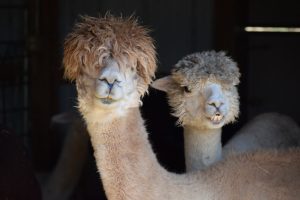 Do you know how to tell the difference between an alpaca and a llama? Find out by watching a video in our Meet Your Farmer web series. Meet Erin Greene, the farmer at Last Penny Farm Alpacas in Weaverville, NC, and her children, Jacob and Sadie. Erin raises alpacas for their fleeces, which are turned into fiber that can be used to make clothing like socks, hats, or scarves, or even artwork. Learn about how Erin became a fiber farmer, find out what she enjoys about raising animals, and meet the adorable alpacas that call this farm home. After the interview, take a virtual farm tour led by junior farmers Jacob and Sadie.
Do you know how to tell the difference between an alpaca and a llama? Find out by watching a video in our Meet Your Farmer web series. Meet Erin Greene, the farmer at Last Penny Farm Alpacas in Weaverville, NC, and her children, Jacob and Sadie. Erin raises alpacas for their fleeces, which are turned into fiber that can be used to make clothing like socks, hats, or scarves, or even artwork. Learn about how Erin became a fiber farmer, find out what she enjoys about raising animals, and meet the adorable alpacas that call this farm home. After the interview, take a virtual farm tour led by junior farmers Jacob and Sadie.
We’ve paired these videos with:
- related lesson plans (you could use these videos as a starting point to study farm life, farm animals, animal fiber/weaving, traditional arts and crafts, or soil health/manure)
- viewing comprehension questions
- a vocabulary list, and
- a journal prompt.
—
That’s it for this week. Check back next week for new resources. Click here to access Day by Day resources from past weeks. If you didn’t find what you’re looking for here, please visit our Lesson Plans page.
